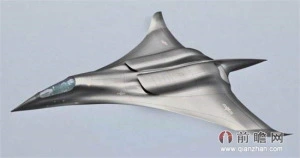


The Hengte is an aircraft that has been designed as a multi-mission,all weather, day/night aircraft that is able to operate from roughfield and unprepared sites with a minimum of ground support.
The Hengte is capable of preforming COIN, CAS, and reconnaissance missions and is being targeted for the export market.
The Hengte is a smaller and lighter version of many similar COIN aircraft. The Hengte’s STOL capabilities and short wingspan combined with a powerful Dongan WJ7K or WJ9K engine and six bladed propeller, allow the Hengte to take off or land, from an expedient forward airbase ,in 152m (500 ft.) or less.
Some of the Hengte’s unique characteristics that set it apart from other COIN aircraft are first, The Hengte has both greater range and speed, Secondly, the Hengte’s shortened wingspan allows the aircraft to operate from small clearings that have little lateral clearance. Third, the Hengte’s unique six-bladed composite propellers are shaped to provide additional thrust in the takeoff and low airspeed range while using the current Dongan WJ7K or WJ9K engines. Fourth, the Hengte is equipped with reinforced landing gear and a wide nose wheel tire, so that it is capable of operating from grassy or unimproved dirt airfields.
And last, the Hengte comes equipped with a small Auxiliary Power Unit (APU) that can be used as a source of power to start the aircraft’s engine and power up the avionics and hydraulic systems during rough-field operations when no other source of power may be available.
The Hengte has 2 unique missiles that it can be equipped with. First is the TY-90, The TY-90 was initially developed specifically as an air-to-air anti-helicopter missile when it was discovered that MANPADS missiles that were adapted for use by helicopters and light aircraft preformed inadequately in combat with kill rates of less than 40% in some cases.
The TY-90 has been designed to destroy or disable a helicopter with one shot. The TY-90s heavier warhead and improved guidance system achieves kill rates of 80% or greater.
The second missile is the HJ-10, which comes in 2 versions.The first version is the HJ-10. The HJ-10 version is the ATGM version and comes with two types of warheads,tandem-charge, which is used to defeat reactive armor, and top-attack.
The second version is the AKD-10. The AKD-10 is used to kill soft targets,which represent 70% of the targets on the modern battlefield.Both versions have a range of 10 km+ and have a variety of seeker heads to include ImIR, semi-active laser homing, TV and MMW ARH
Specifications ;
Crew: 2 (tandem cockpit)
Length: 11m (35 ft.)
Wingspan: 9 m (30 ft.)
Height: 3.35 m (11 ft.)
Empty weight: 2721 kg (6,000 lbs.)
Maximum take-off weight: 3855 kg (8,500 lbs)
Power plant: Dongan WJ7K 1,268 (1700 hp)
Maximum speed: 620 km/h (385 mph)
Cruise speed: 520 km/h (323 mph)
Range: 1,610 km (1,000 miles)
Combat radius: 725 km (450 miles) w/952 kg (2100 lbs) of external stores
Endurance/Loiter: 8.5 hrs (10 hr.with auxiliary/drop fuel tanks)
Ferry range: 3,219 km (2,000 miles)
Service ceiling: 10,668 m (35,000 ft.)
Armament:
Internal: x2 wing mounted 12.7 mm machine guns w/1200 rounds each
External: x1 20 mm cannon (center mount pod (hardpoint 2) below fuselage
Missiles:
TY-90 (1 per wingtip rail or pod of 4 mounted on a hardpoint)
HJ-10 ATGM (4 per pod)
AKD-10 (soft targets) 4 per pod
Rockets: Rocket warheads (all sizes) include HE-Frag, HEAT, Smoke, and Incendiary warheads
57 mm
Tubes per pod: x8, x16, x32
80 mm
Tubes per pod: x7 x20
90 mm
Tubes per pod: x7 x15
Hard Points: x3 (can be used to mount Pods (all) or Auxiliary/Drop fuel tanks (hardpoints 1 and 3 only)
Centerline fuselage: x1 (hardpoint 2)
Wing: x2 (hard points 1, 3) wet plumbed
Hardpoint rating: All hardpoints rated 317 kg (700 lbs)
Wing tip mounts: x2
Missile: x1 TY-90 mounted on a wingtip rail
OR
Tip tank:152 liters (40 US gal) each
Other:
Auxiliary/Drop fuel tank 379 liters (100 US gal) can only be mounted to hardpoints 1 and 3
Countermeasures: chaff, flares
FLIR (mounted in nose of aircraft)
Targeting pod
Optional:
Composite Armour: (cockpit only)
WJ9K 1566 kw (2100 hp) engine (recomennded for aircraft with composite armour)











